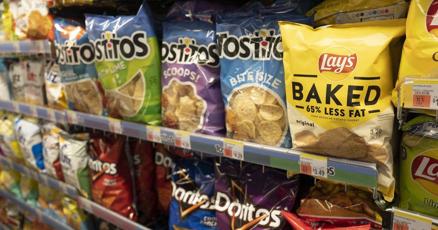The truth about our diets may soon be impossible to hide, even from ourselves. A groundbreaking study published in The American Journal of Clinical Nutrition has revealed that specific markers in our blood and urine can accurately detect how much ultraprocessed food we’re actually consuming—not just what we claim on dietary questionnaires.
The implications are both fascinating and slightly unnerving. For years, nutritional research has relied heavily on self-reporting, a method notoriously fraught with human error and bias. We forget that midnight snack, underestimate portion sizes, or simply lie to ourselves about our weekend indulgences. But our bodily fluids, it seems, keep more honest records.
“This research represents a significant step forward in nutritional epidemiology,” says Dr. Bernard Srour, lead researcher at the French National Institute for Health and Medical Research. “These biomarkers could revolutionize how we understand the relationship between diet and disease.”
The study identified four compounds that reliably indicate ultraprocessed food consumption: acesulfame potassium (an artificial sweetener), urolithin C glucuronide (linked to processed meat intake), ethyl glucuronide (an alcohol metabolite), and 2-hydroxyisobutyrate (associated with artificial sweeteners). These chemical signatures effectively create a biological record of our true dietary patterns.
What makes this discovery particularly relevant is the mounting evidence linking ultraprocessed foods—those industrially manufactured products containing ingredients rarely used in home cooking—to serious health conditions. From increased cancer risk to higher rates of cardiovascular disease and obesity, these convenient, shelf-stable products have become a cornerstone of modern diets while simultaneously undermining public health.
The average North American now derives nearly 60% of their daily calories from ultraprocessed foods. These products—think packaged snacks, ready meals, sugary cereals, and reconstituted meat products—have become ubiquitous in our food landscape, their consumption normalized to the point of invisibility. Yet their impact on our collective health remains anything but invisible.
What’s particularly revealing about this research is how it might transform public health approaches. Rather than relying on notoriously unreliable food frequency questionnaires, researchers and clinicians could potentially use simple blood or urine tests to assess dietary patterns with unprecedented accuracy. The implications for both research validity and personal health monitoring are substantial.
“We’re entering an era where objective measurement of diet quality becomes possible,” notes Dr. Emma Carlton, nutritional epidemiologist at McGill University, who wasn’t involved in the study. “This could transform how we approach dietary interventions and public health policies around food.”
For the average consumer, this research raises intriguing questions about dietary honesty and self-awareness. Would knowing that your physician could measure your ultraprocessed food intake change your shopping habits? Would food manufacturers reformulate products if consumers had access to easy testing that revealed the biological impact of their products?
The biomarker research also highlights a growing tension in our food culture. While cooking shows and food media celebrate artisanal, whole-food cooking, our actual consumption patterns tell a different story—one of convenience, speed, and industrial processing. The gap between our culinary aspirations and dietary realities has perhaps never been wider.
Critics might argue that such testing represents yet another form of body surveillance in a culture already obsessed with optimization and health monitoring. Yet others see potential for empowerment—giving consumers concrete information about how their dietary choices manifest biologically.
As we navigate an increasingly complex food environment, tools that cut through marketing claims and nutritional misinformation become increasingly valuable. These biomarkers may eventually provide just such a tool—an objective measure in a realm often dominated by subjectivity and commercial interests.
What remains clear is that our relationship with food continues to evolve in response to scientific discovery, technological innovation, and cultural shifts. The ability to detect ultraprocessed food intake through biomarkers represents just one more step in our ongoing attempt to understand the complex relationship between what we eat and who we become.
The question now is not just whether we can measure our ultraprocessed food consumption, but whether that knowledge will change how we eat—and ultimately, how we live. As we gain unprecedented insight into the biological signatures of our diets, will we heed what those signatures tell us about our health and future wellbeing?










